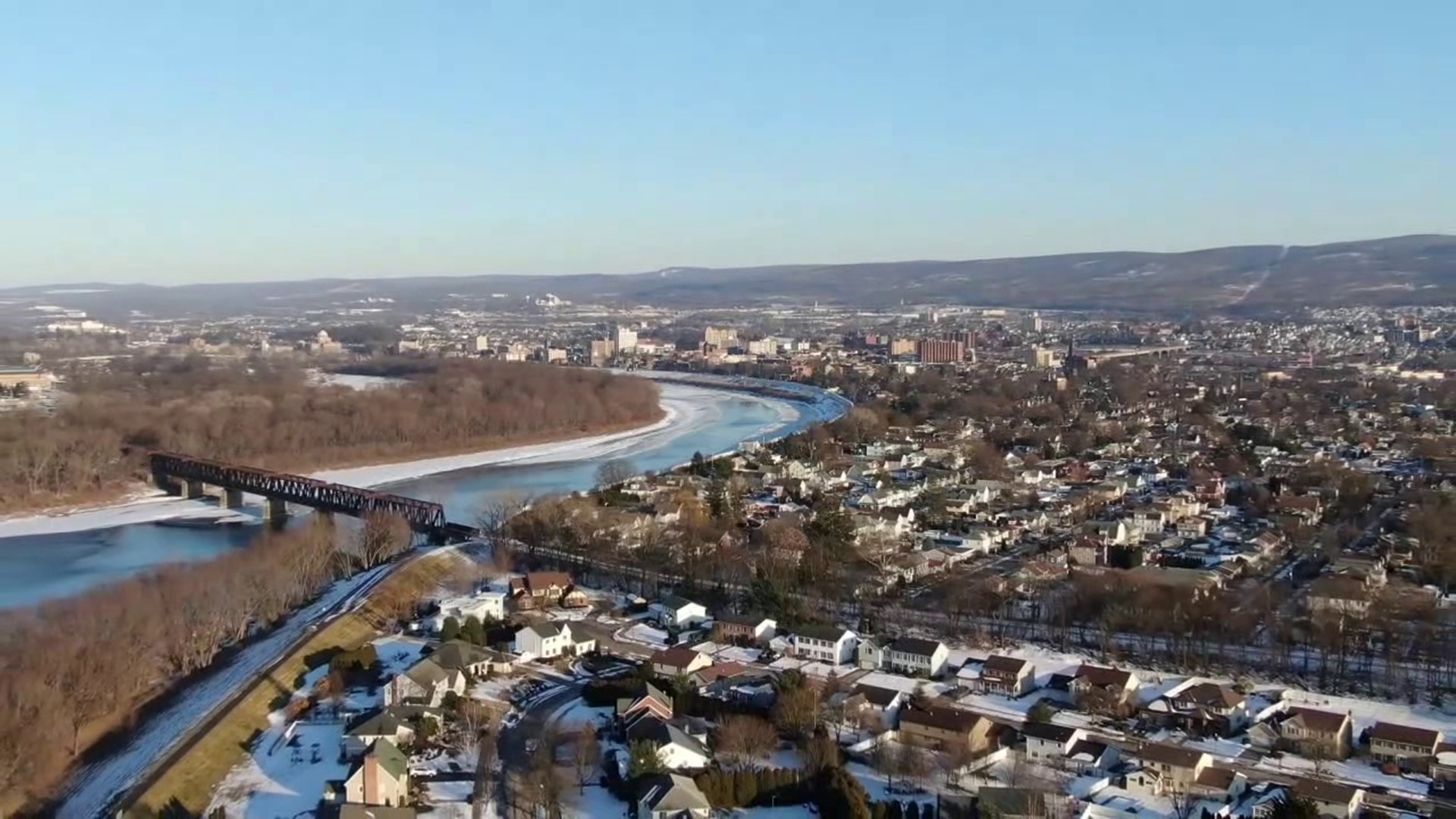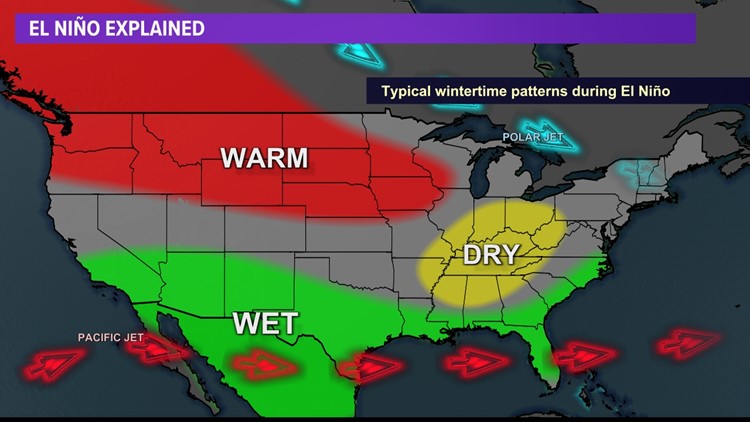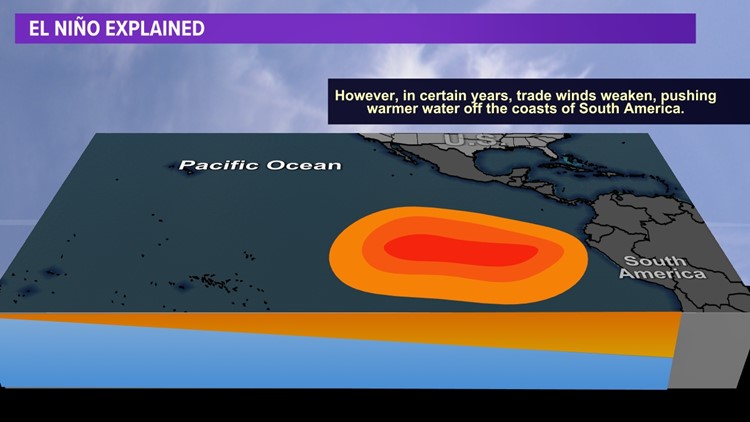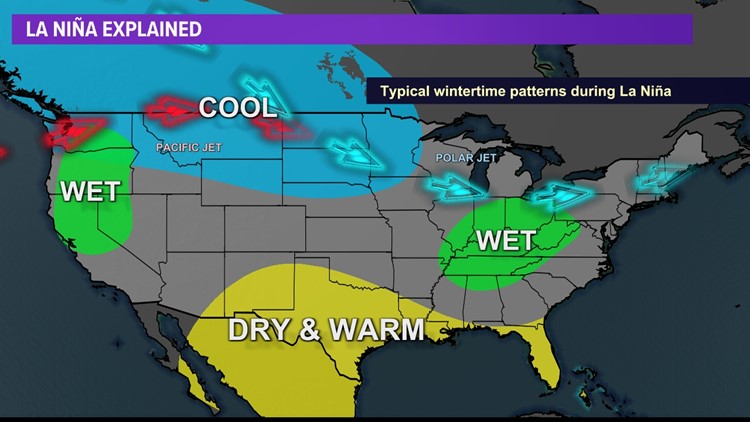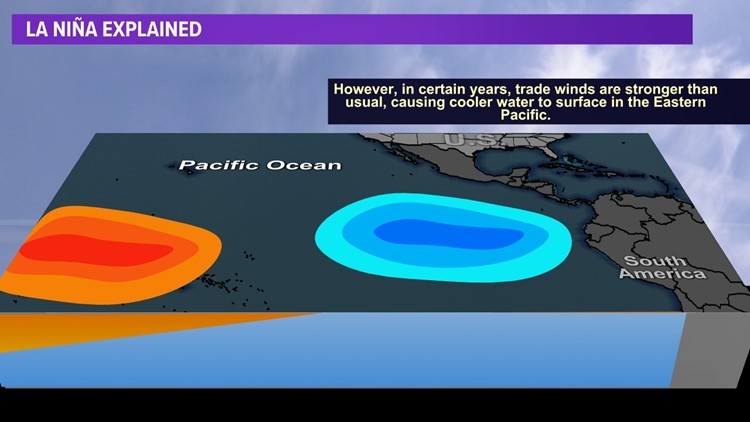PENNSYLVANIA, USA — El Niño and La Niña are defined as two opposing climate patterns in the Pacific Ocean that can affect the weather all across the world. Normally, trade winds, which blow east to west, push warm surface waters towards Asia. But El Niño and La Niña are phases that break these normal conditions, making the ocean temperatures warmer or colder than average.
During El Niño, trade winds weaken, and during La Niña, trade winds are stronger than usual.
"The difference between the two is El Niño is the positive phase where temperatures in the central Pacific are warmer than normal, and La Niña is the negative phase, so when we have those temperatures that are below normal, and these are ocean temperatures," said National Weather Service Meteorologist Michael Kistner.
Scientists call these phenomena the ENSO cycle, just one of the many factors that affect weather patterns.

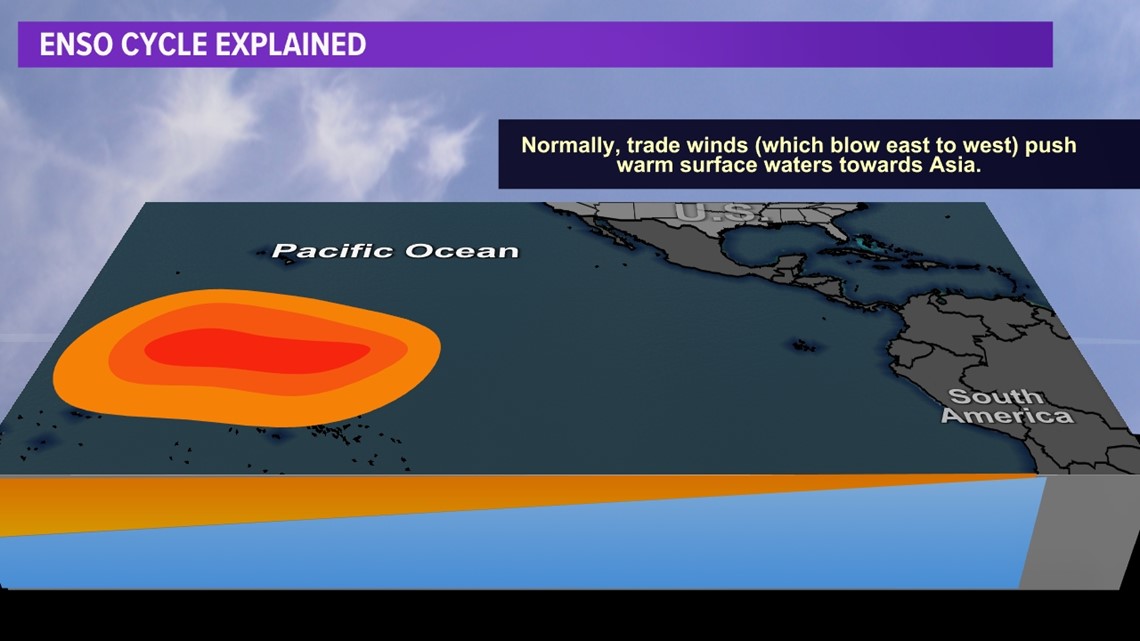
"When we tend to have the much stronger El Niños or La Niñas, it tends to have a much bigger impact on the weather patterns where you can see the shifts in the Jet Stream," Kistner said.
For example, the El Niño phase has been generally known to cut off monsoon rainfall for areas that rely on rain. While the La Niña phase can lead to a more severe hurricane season.
El Niño Explained
Here in the U.S., an El Niño winter can be wetter in the south and warmer in the north, whereas La Niña winter tends to be dryer and warmer in the south and cooler in the north.
Generally, the phases change every two to seven years. This winter, we have been in a weak to moderate La Niña phase.
La Niña Explained
"It tends to feature a lot more temperature variability for us, and you tend to have faster-moving systems and a lot more weather systems with it," explained Kistner.
La Niña winters here in the northeast tend to feature above-average temperatures; we certainly saw that back in December. But meteorologists say it is important to remember that the phase we are in does not provide an exact forecast but more of a general idea of what you can expect.
"The ENSO, the oscillation, is only one oscillation of many that affects our weather patterns here. So because of La Niña's effects, it's not necessarily certainty, it's more of a probability of what we can expect during a winter."
La Niña is expected to continue through as least the end of spring.

